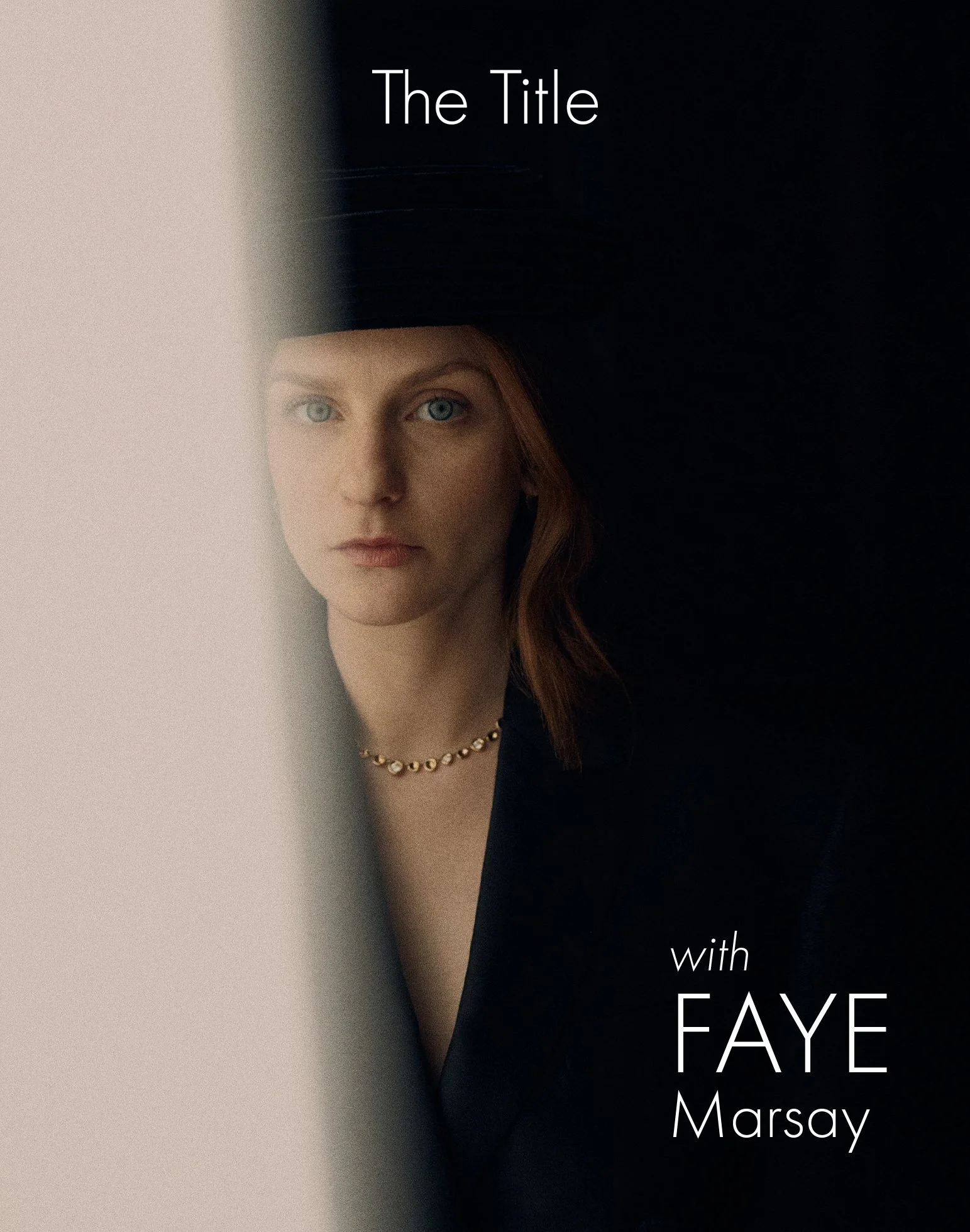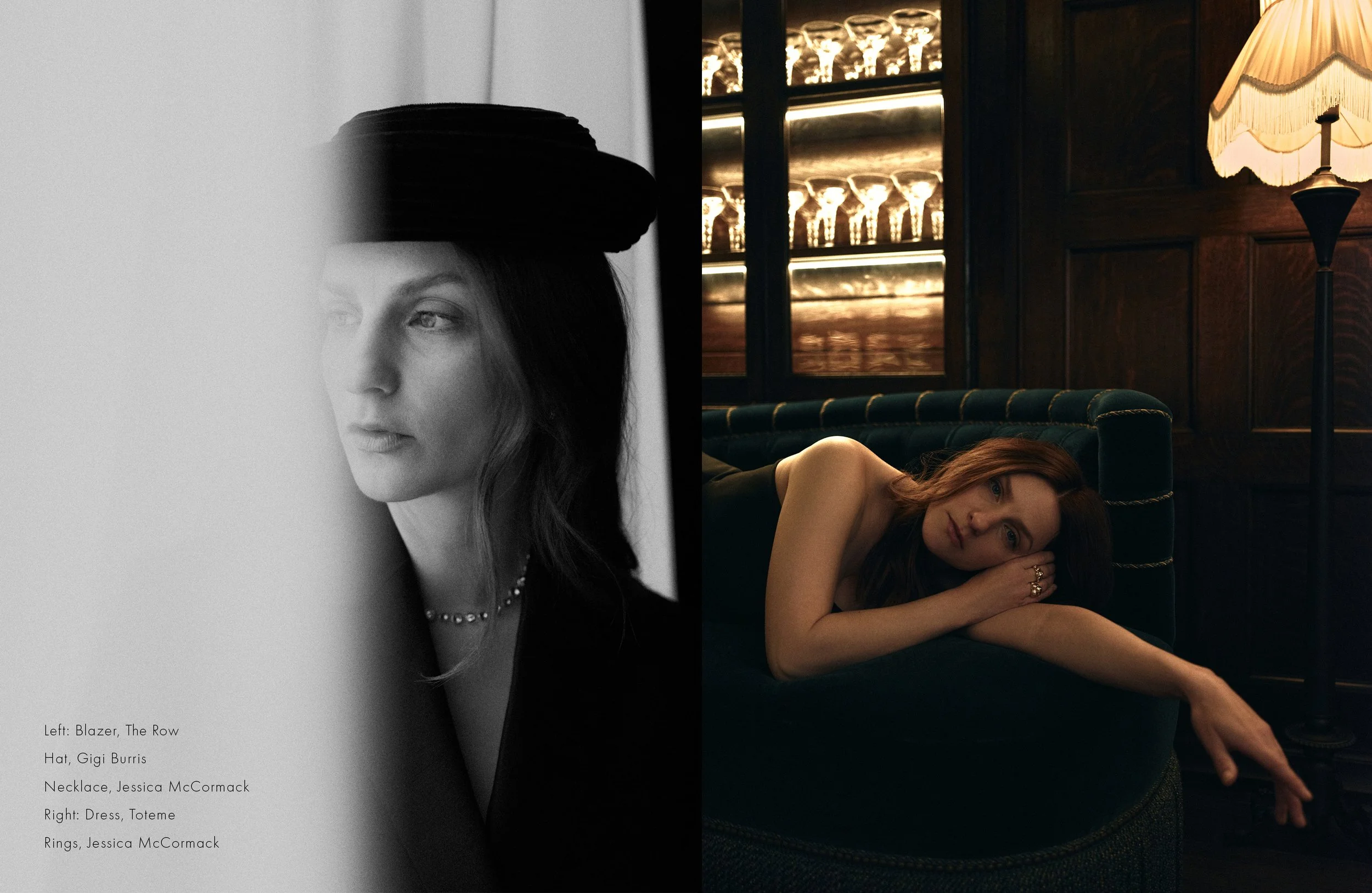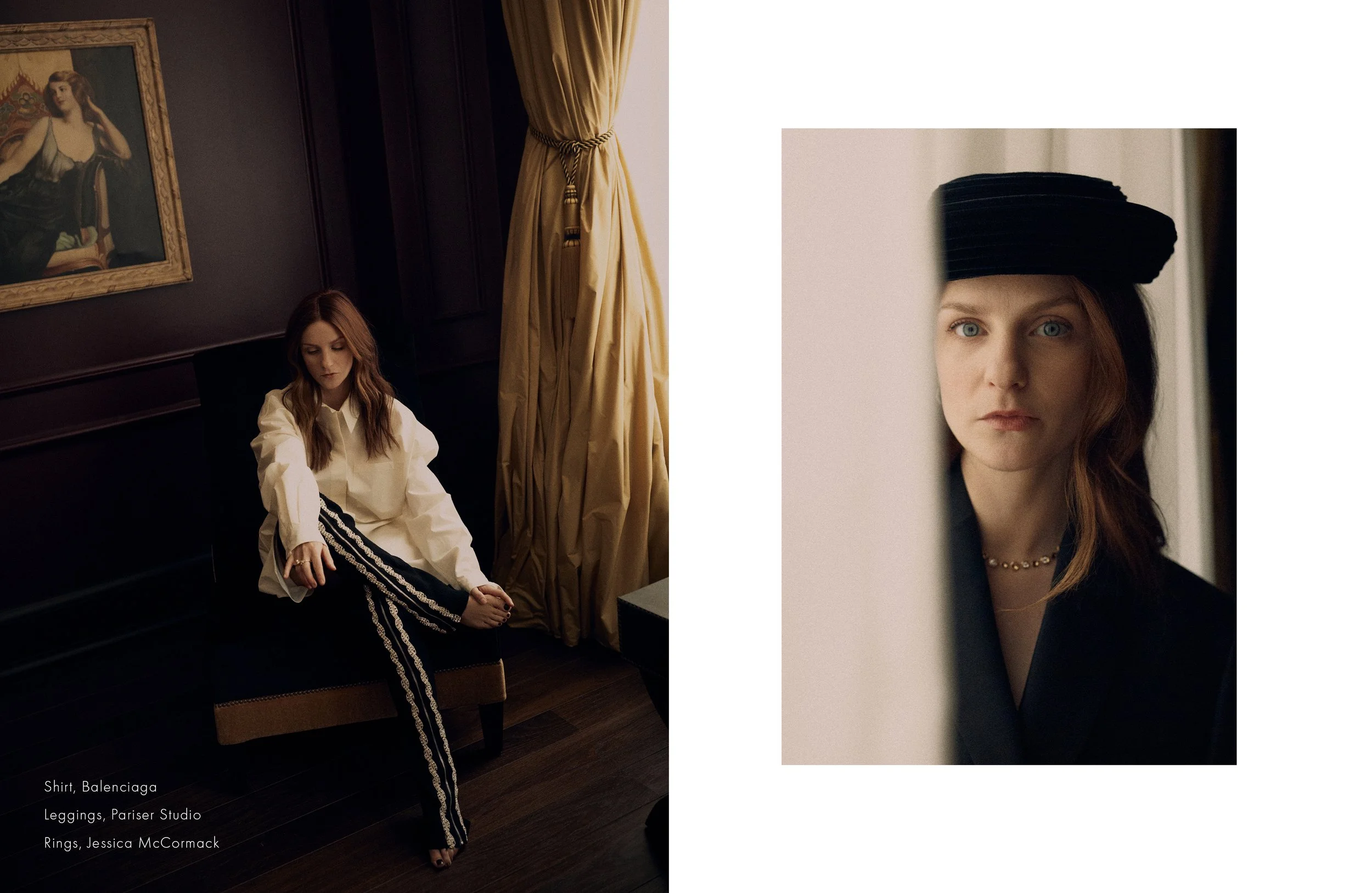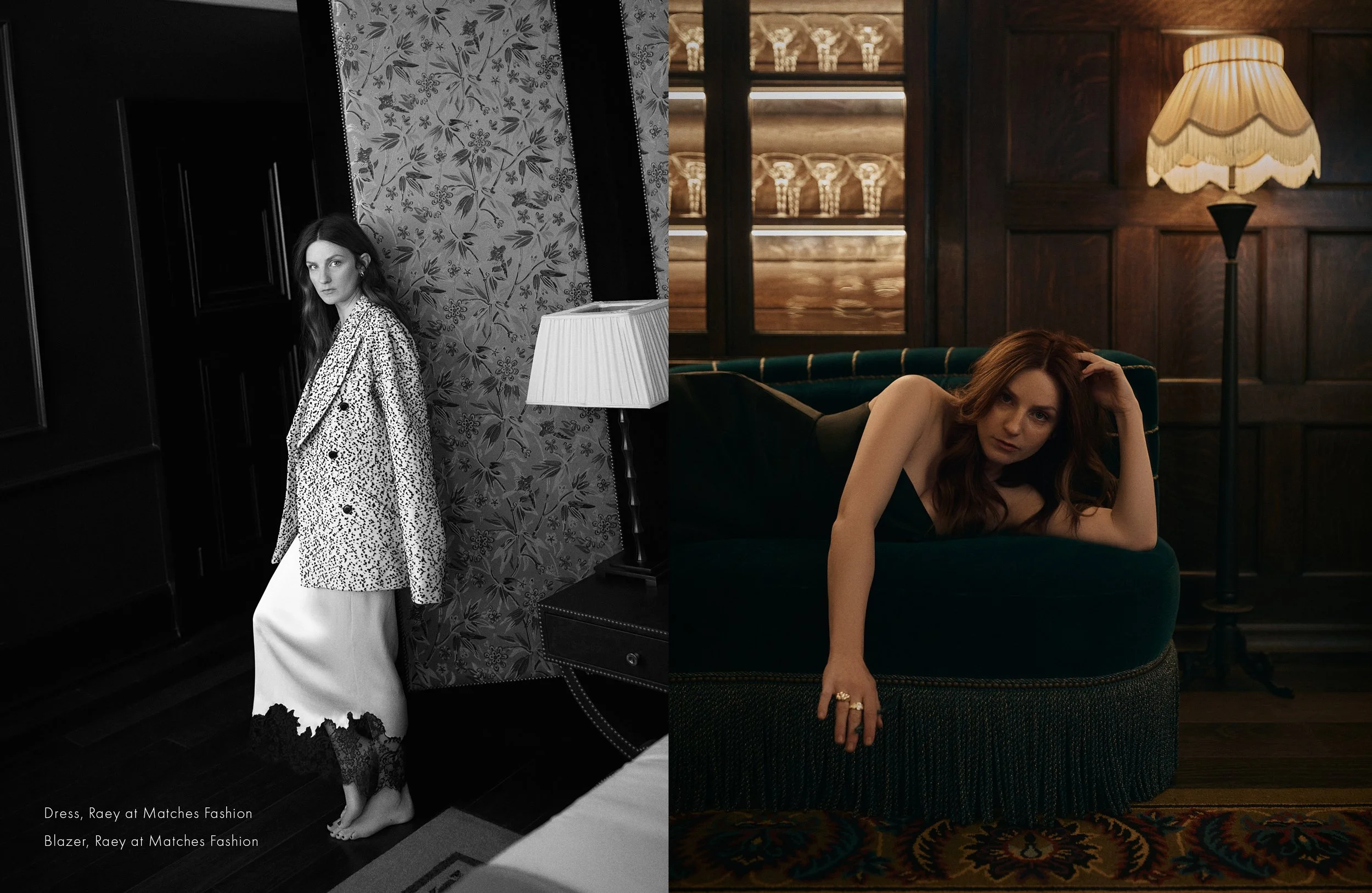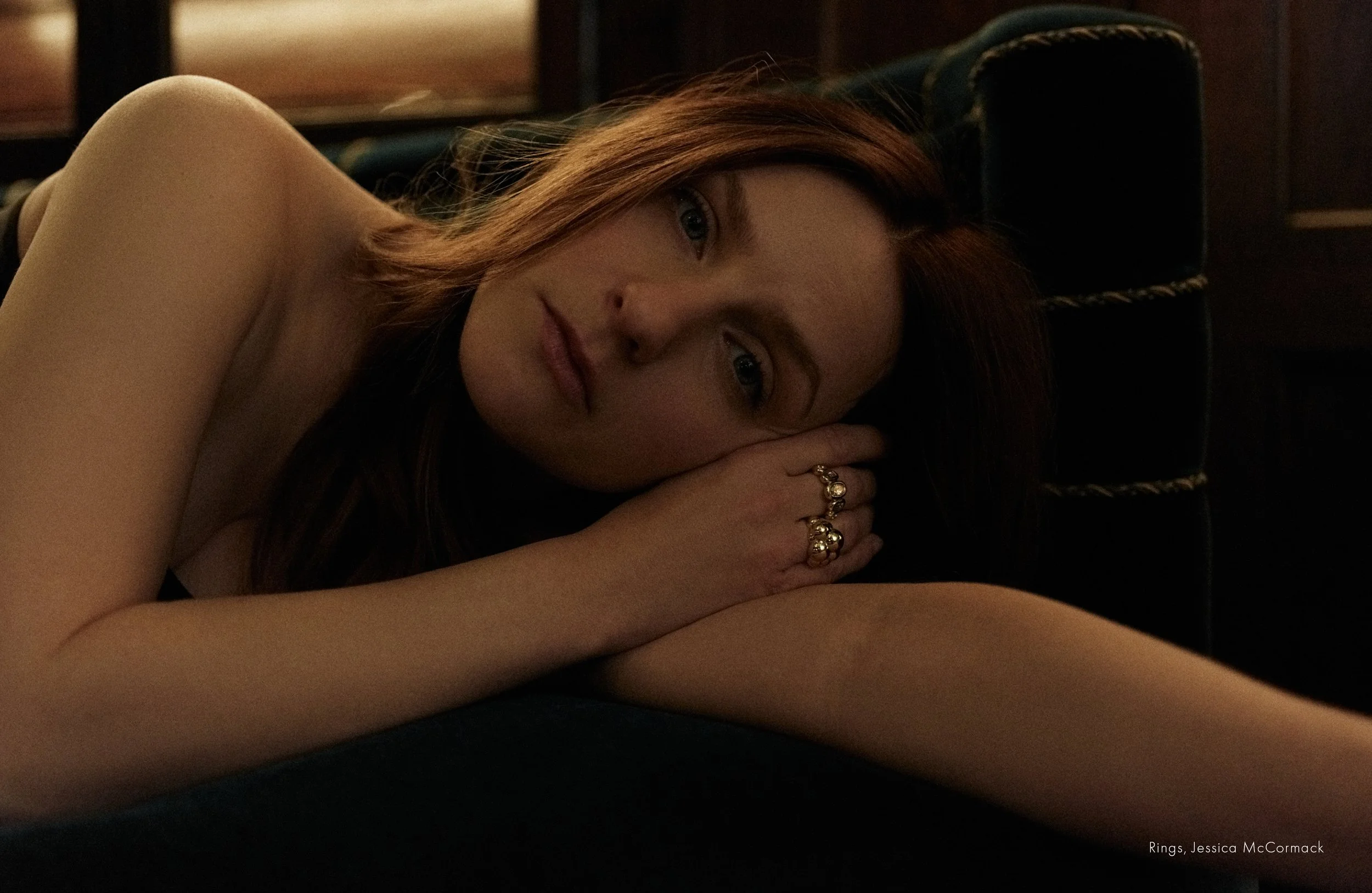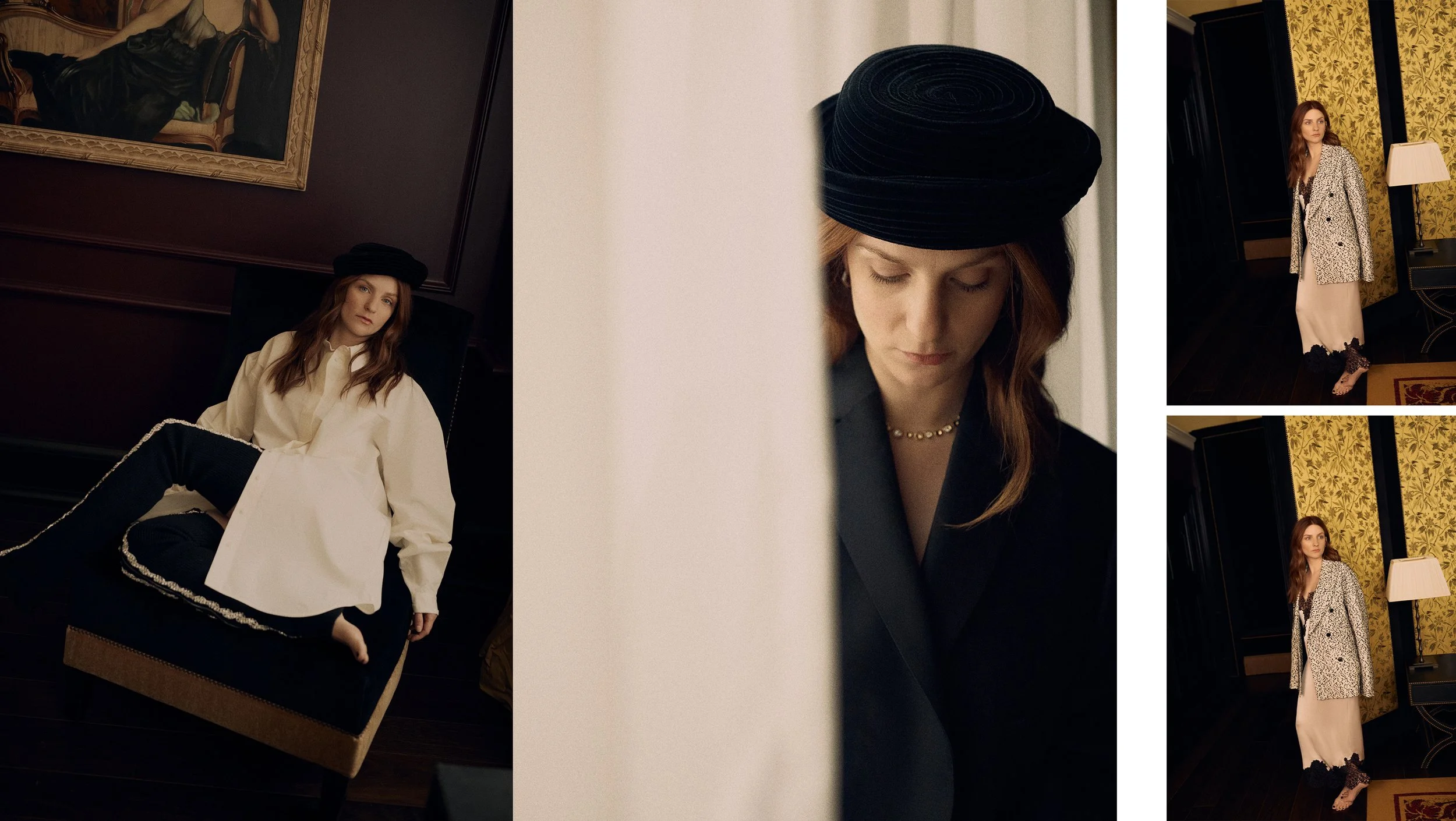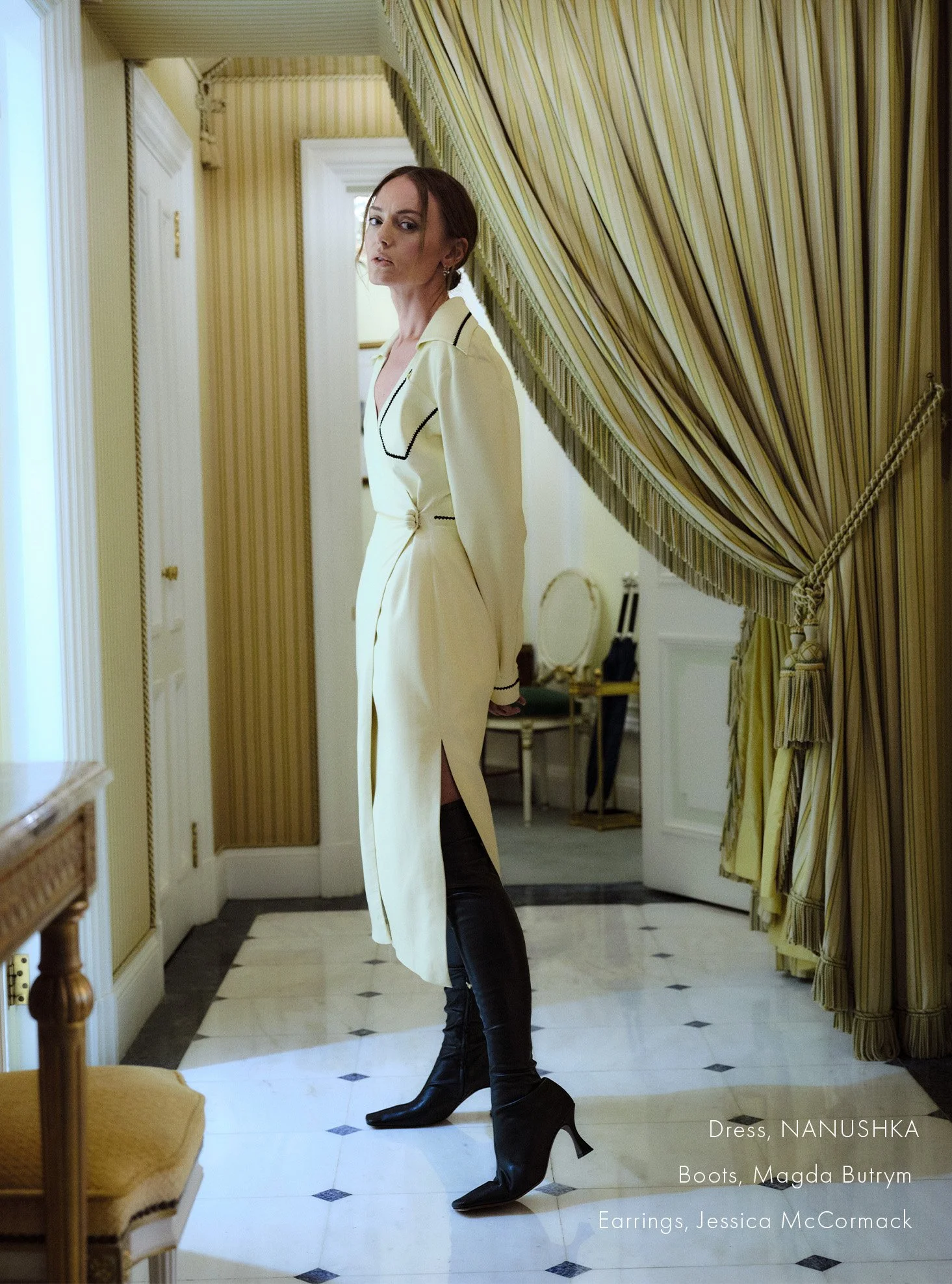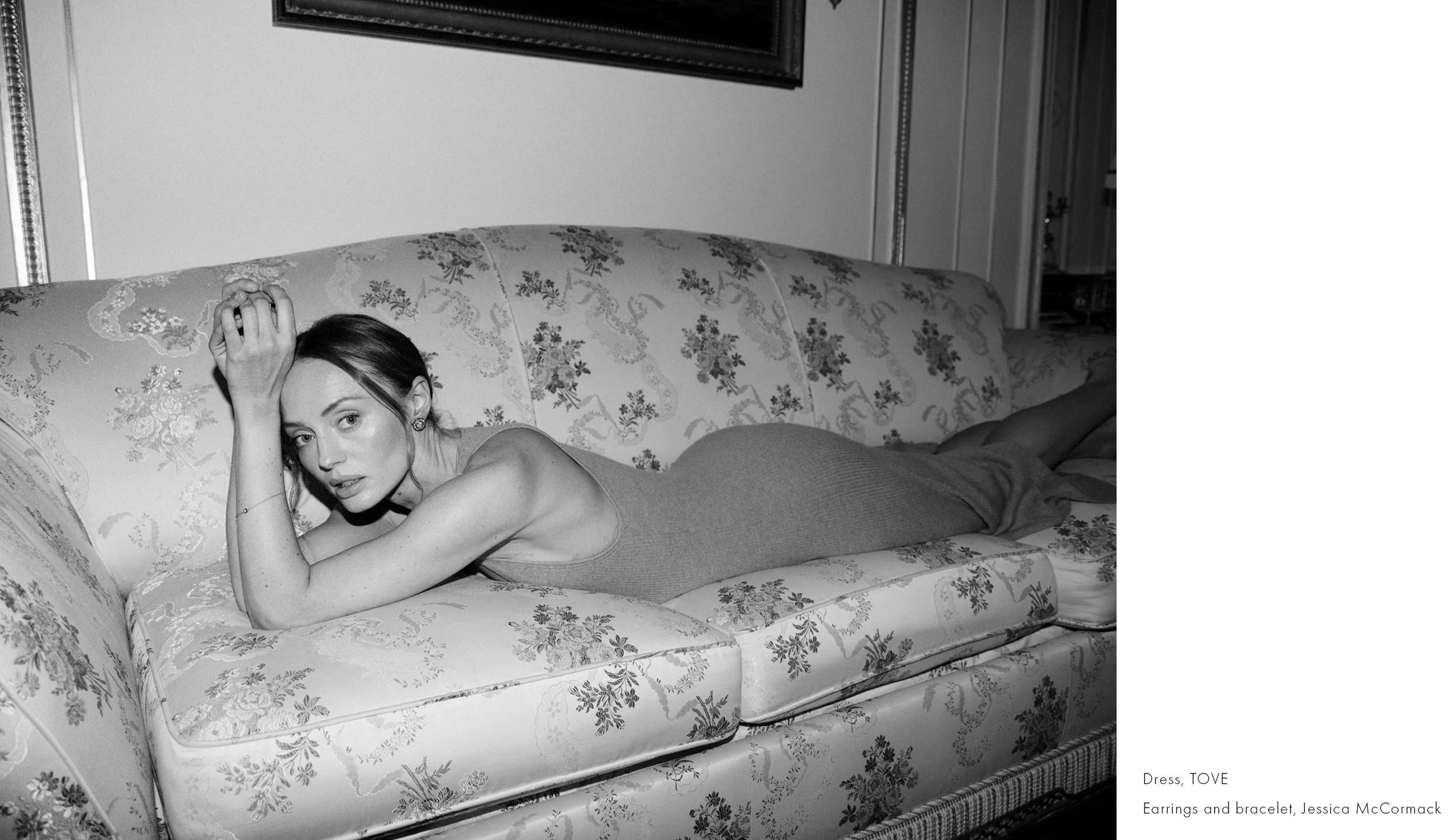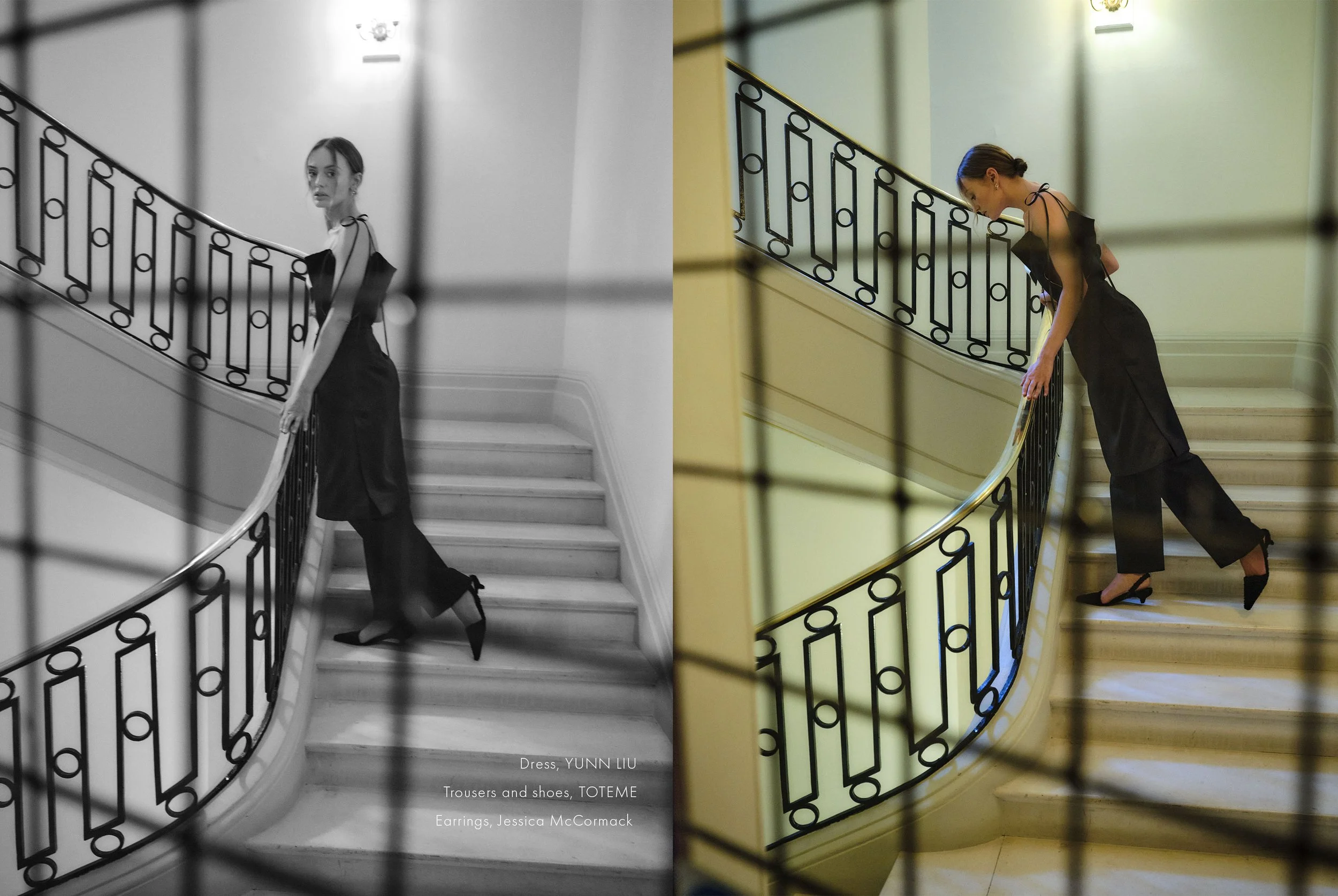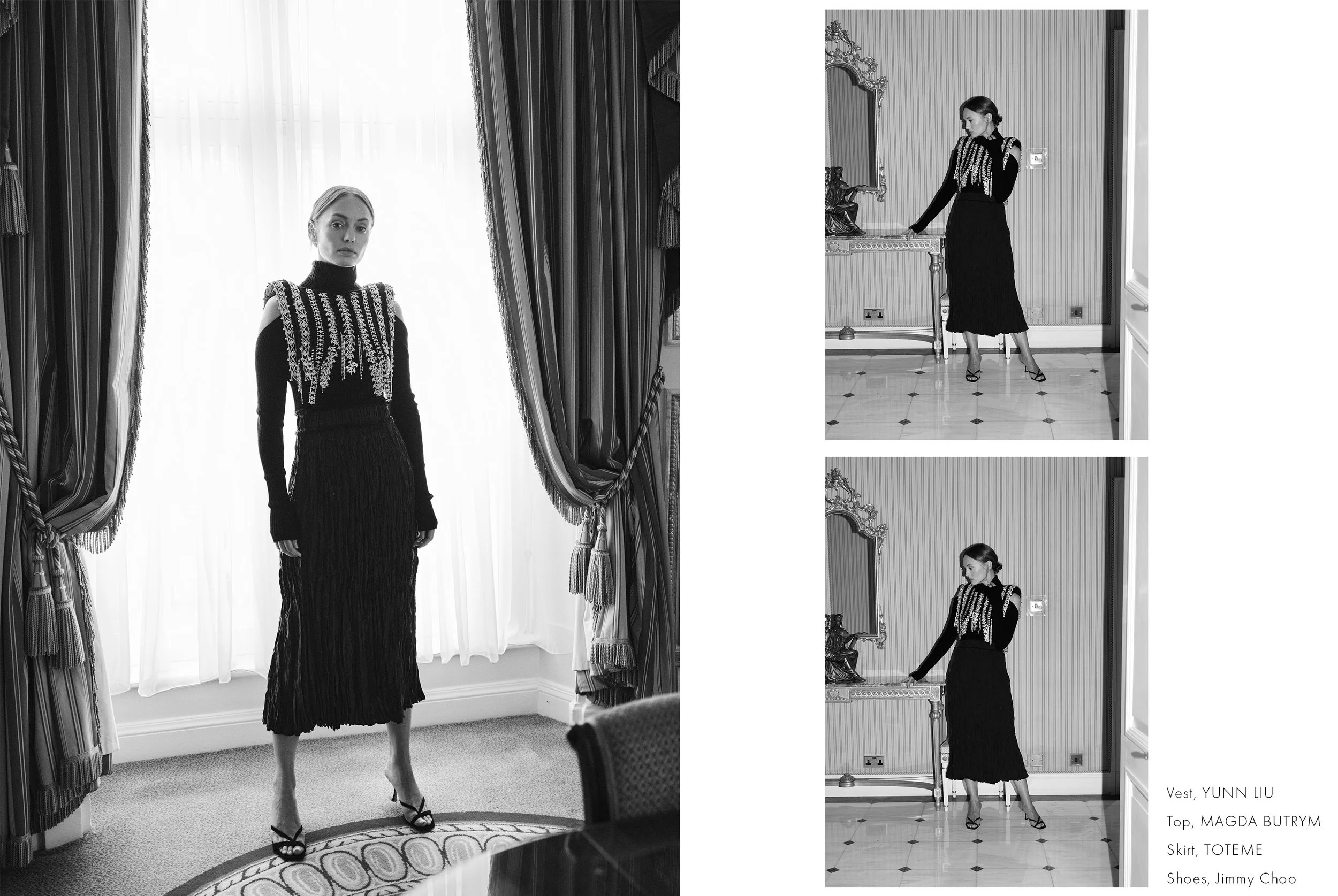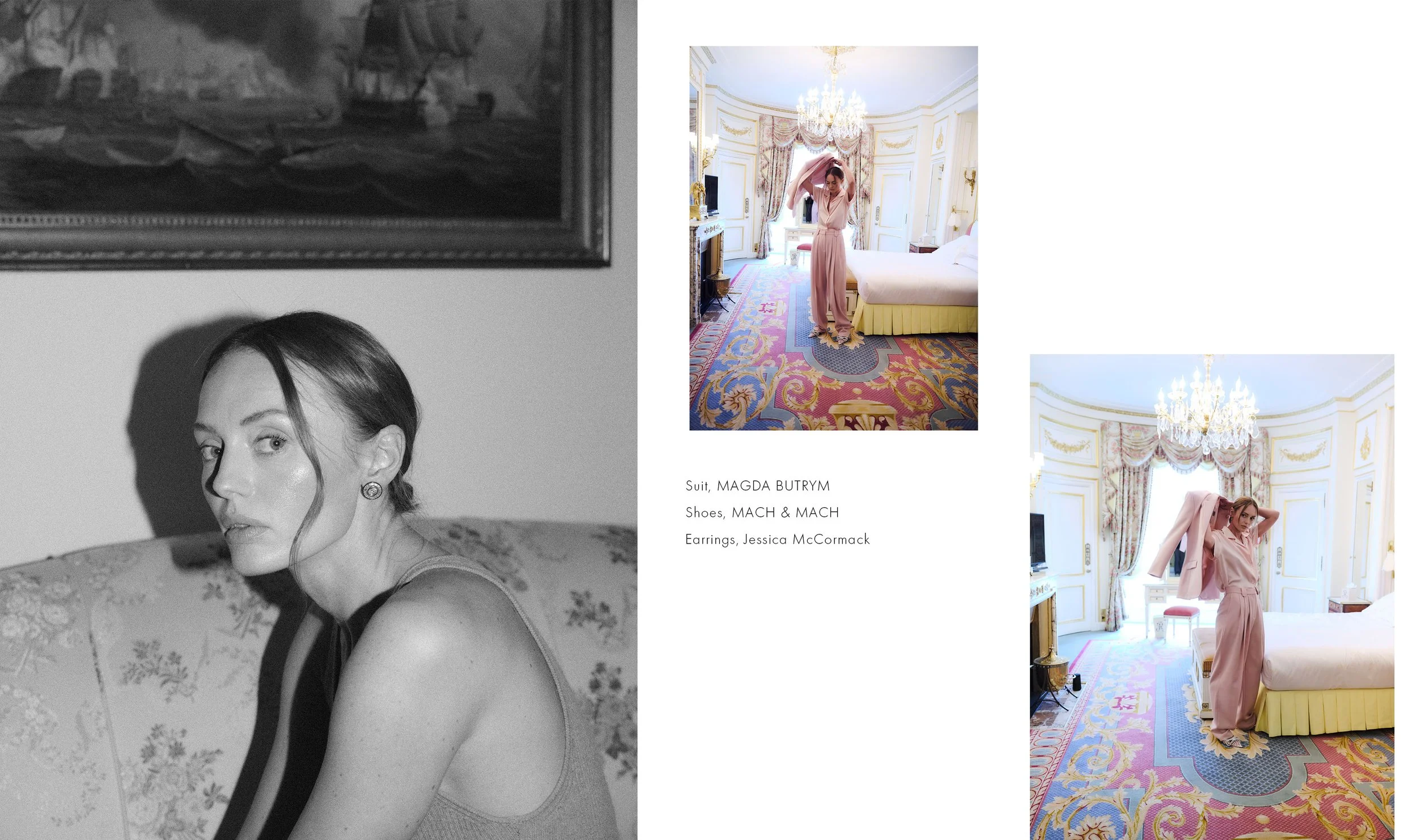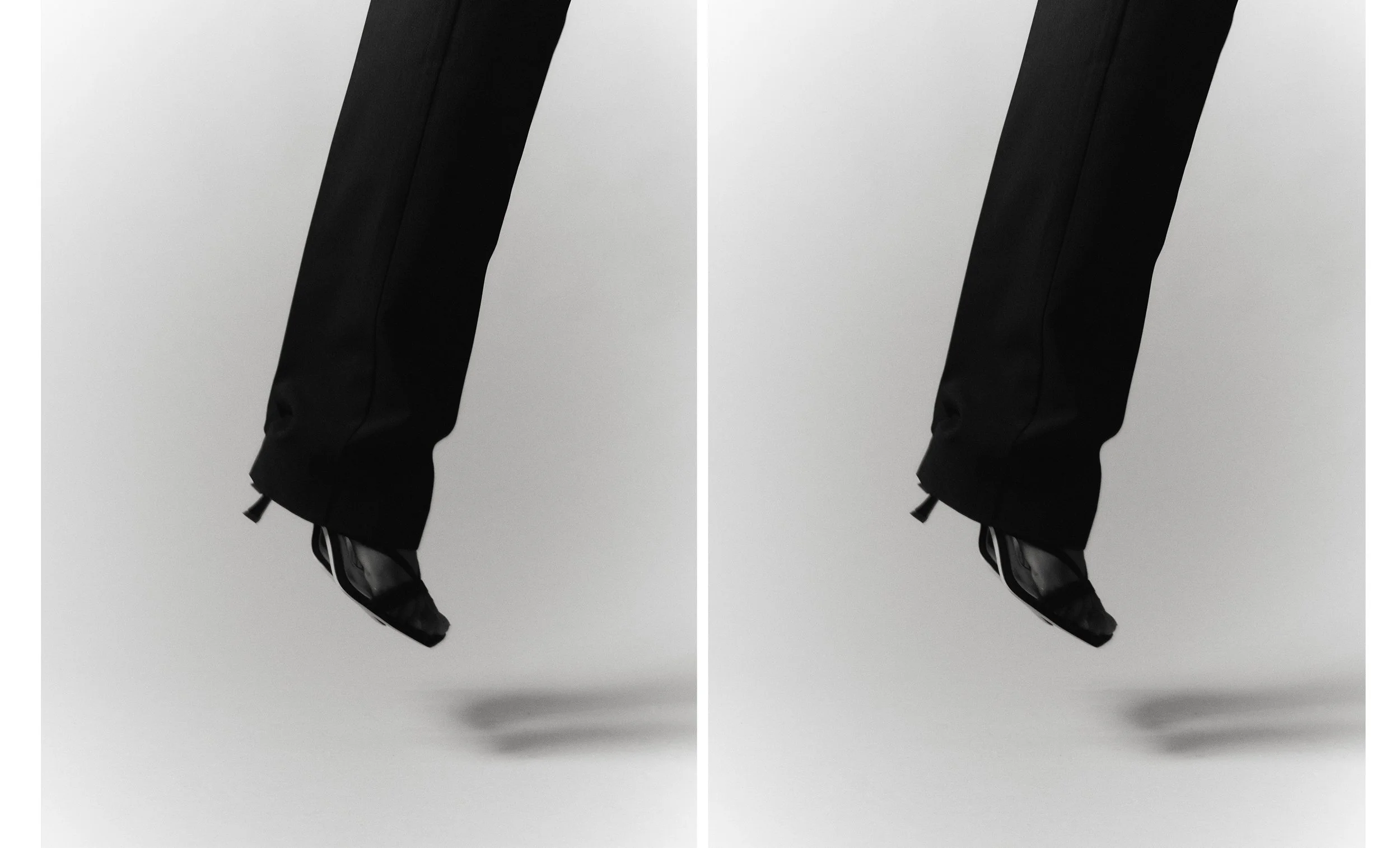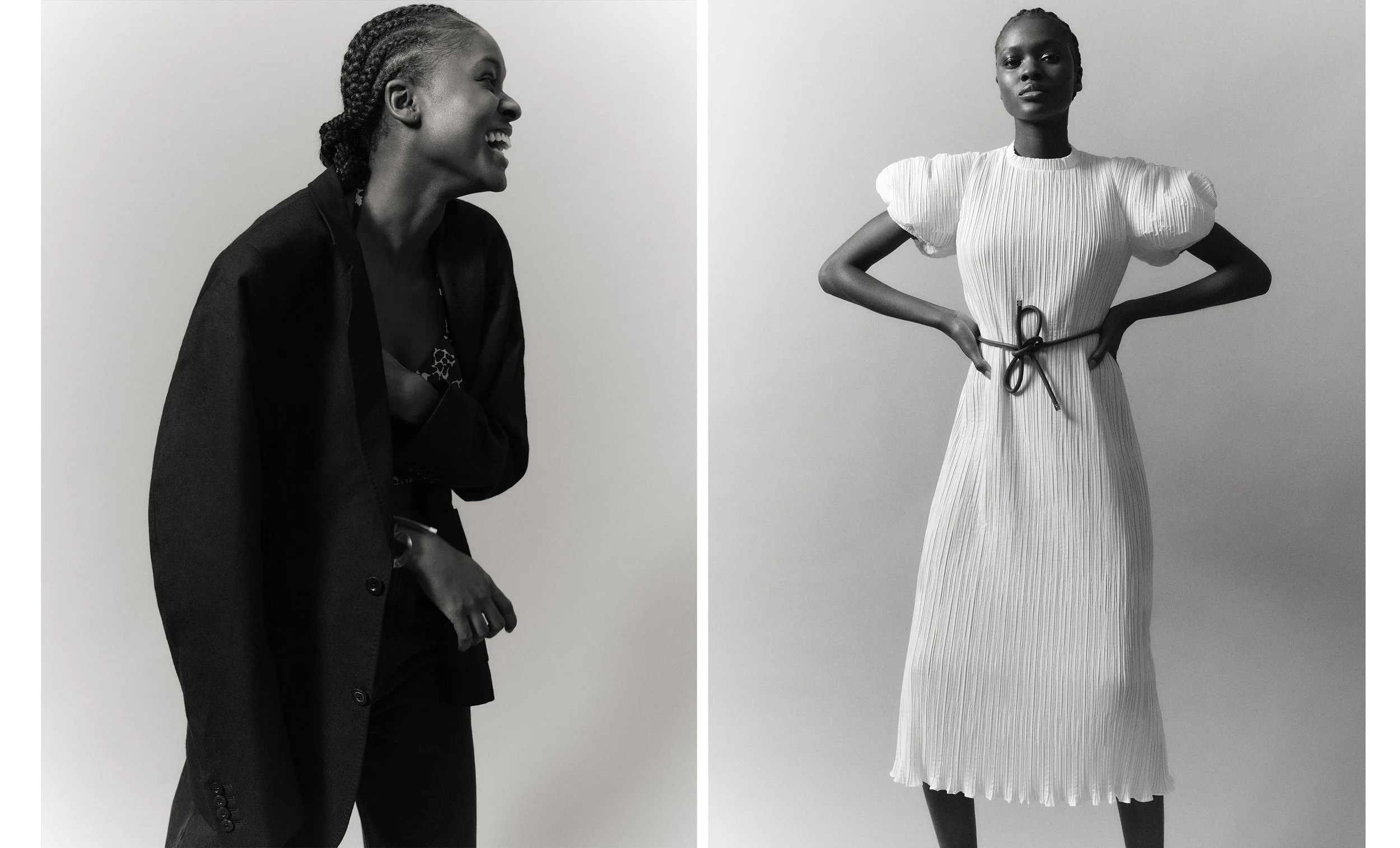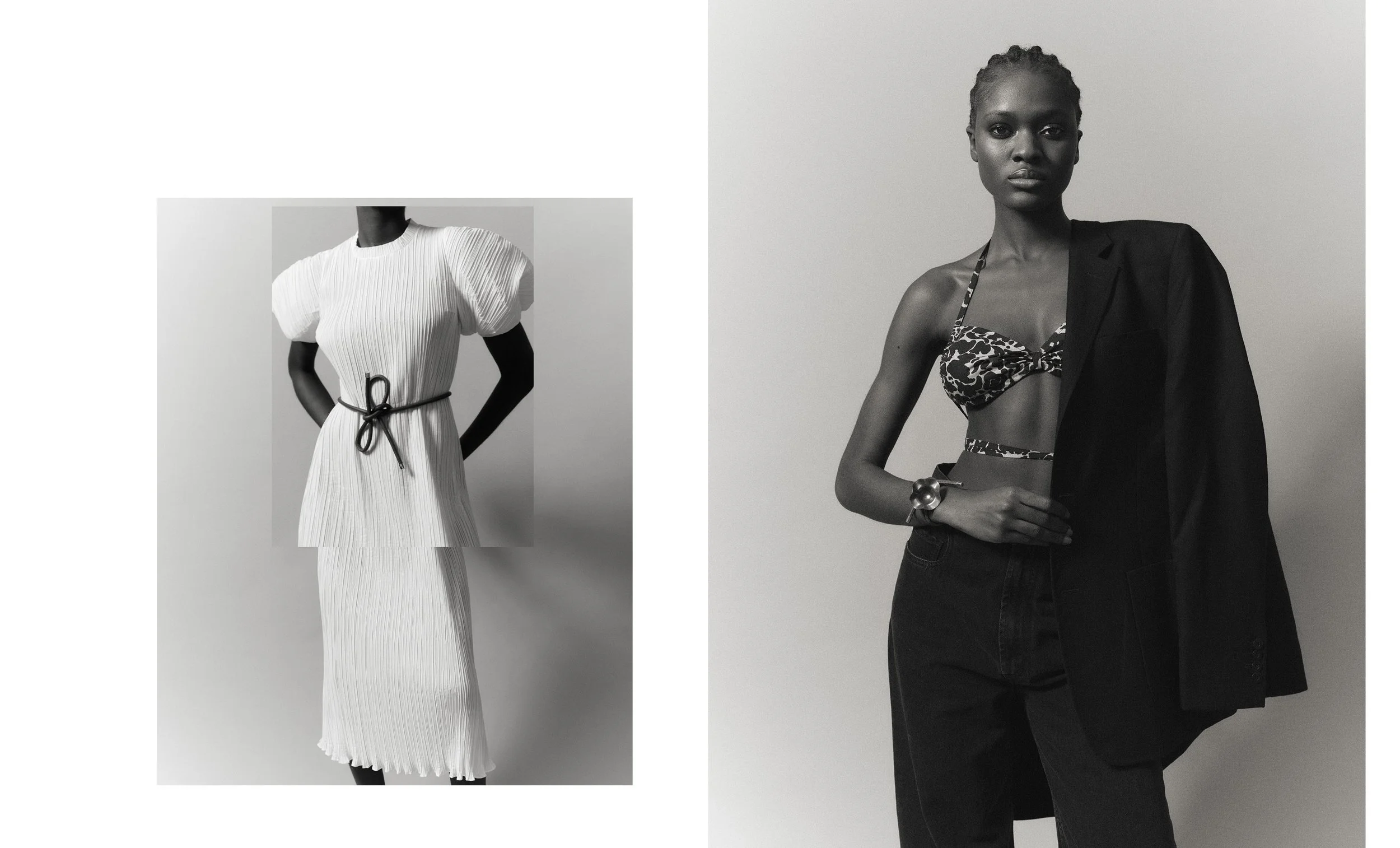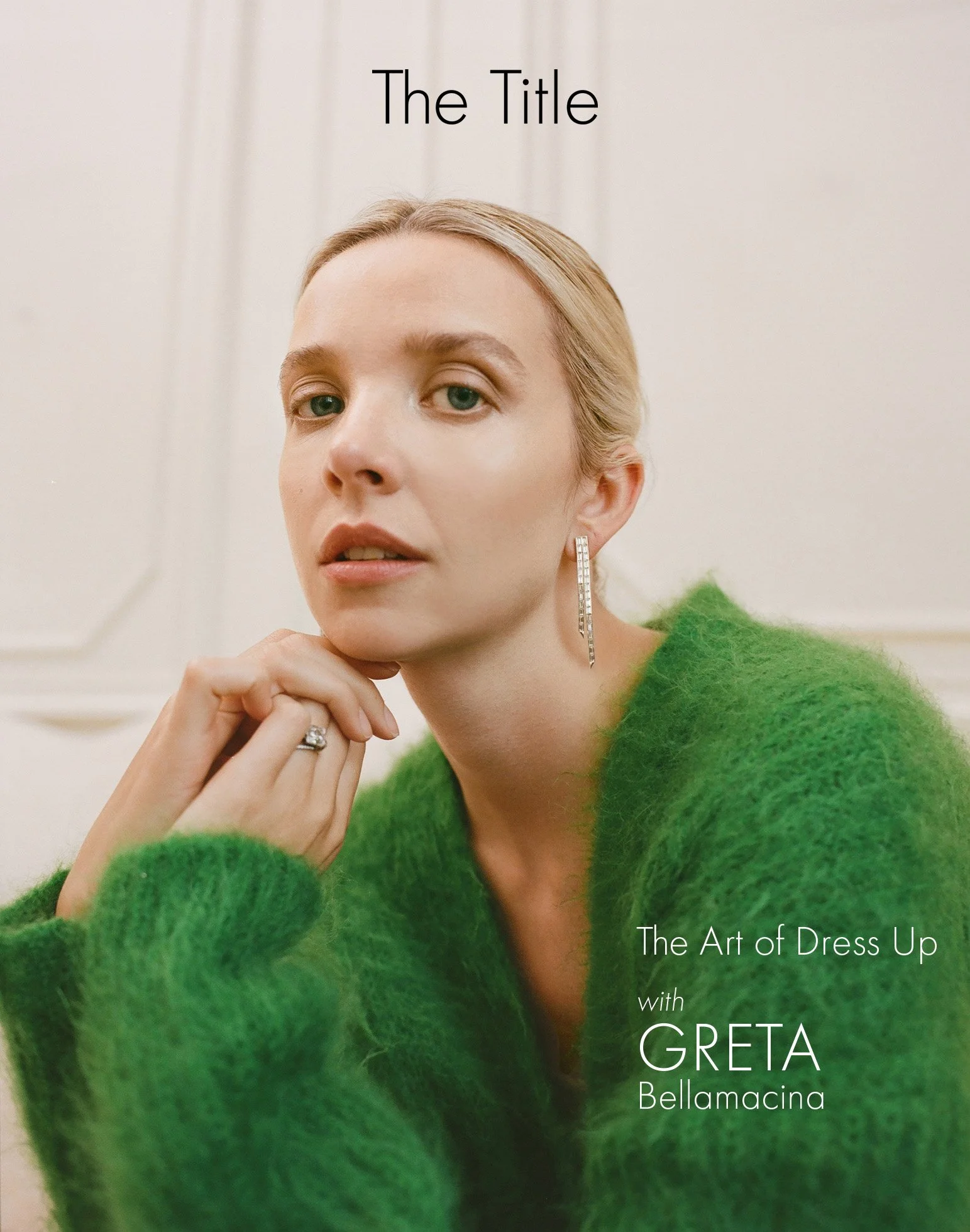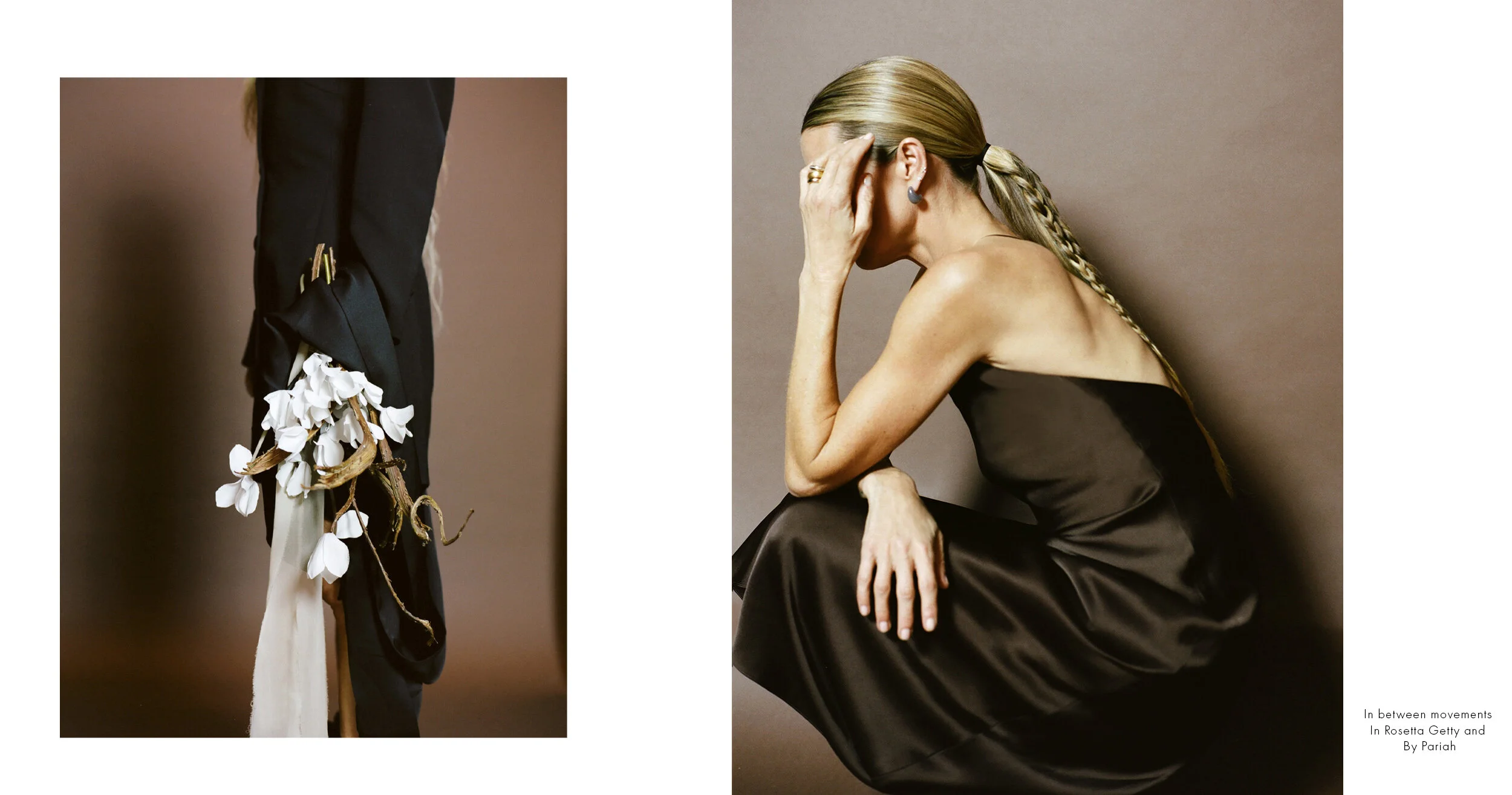SELF Title
REASSESS. RE-EVALUATE. RECREATE.
My mindset has shifted. Being a part of that moment - a celebration, however explosive or intimate - and the beautiful facets that follow, are now what I hope to uncover but with a fresh and modern perspective.
In today's world of opportunity and individuality, do we define our self title?
Surely now is the time to empower ourselves and chart a course, with passion, purpose and conviction.
To keep the flame of expressive self optimism alight... BE your best self, own your title.
Love Robyn
Founder and Creative Director
___ Contents
Faye Marsay at L’oscar London
Photography: Trish Ward
Interview: Charlie Gowans-Eglinton
Styling: Robyn Kotze
Make up: Sara Hill
Hair: Stefan Bertin
At The Ritz with Laura Haddock
Photography: Jesse Laitinen
Interview: Caroline Leaper
Styling: Robyn Kotze
Make up: Sara Hill
Hair: Nao Kawakami
Fashion Assistant: Olivia Jones
Photography assistant: Emre Cakir
Beaufille Special with Jesse Laitinen
Greta Bellamacina at The Savoy
Photography: Theresa Marx
Interview: Caroline Leaper
Styling: Lorna McGee
Make up: Francesca Angelina Brazzo
Hair: Hiroshi Matsushita
Film: Connor Stratton Darling
Art work: Martin Cole
Floral designer: Still Life Flowers
Frida Munting at Tate Britain
Photography: Theresa Marx
Make up: Michelle Dacillo
Hair: Akiko Kawasaki
Laura Bailey
Photography: Theresa Marx
Make up: Sarah Reygate
Hair: Sabrina Lefebvre
Fashion assistant: Olivia Jones
Words by Charlie Gowans-Eglinton
The magic of downtime
From a Game of Thrones villain to a rebel leader in Star Wars prequel Andor and an aristocrat grappling with sexual repression in Lady Chatterley’s Lover, actress Faye Marsay seems drawn to complex, nuanced female characters.
Her latest role, in BBC historical drama Ten Pound Poms, is true to form, as struggling working class housewife Annie leaves post-war Britain for the promise of a better life for her family in Australia.
Was this a part of British history that you were familiar with?
“There’s always someone who knows someone who moved, but I wasn’t aware of the scheme itself. I wasn’t aware that nearly a million Brits went over, and a quarter of them came home because they couldn’t handle it. The story we’re telling is the big shock of getting there, and it just being this completely different beast than what was promised.
In the war, women had to run the country because the men were away. It’s that matriarchal grit that I liked in Annie. You see her discover that there are other possibilities for her, whereas when she was in the UK she was very happy to be this stereotypical 1950s housewife. I liked seeing her realise: there’s a different world that I can be part of. Women were shy of that, because they had a place in the 50s, an expectation of what their role was, and Annie is able to break away from that, bit by bit.”
Your latest role, Annie, has something in common with past roles - these are women who are nonconformists of their day. Is that something you look for in a script?
“Of course I want to play strong women, but for me it’s more about characters triumphing over something that is oppressing them, I suppose. And especially with women - we all know what that’s like. There’s something in there, a goal to be won, and I like the idea that women are able to strive and win.”
How much do your roles stay with you after filming?
“It’s like anything in life, when you do something you have the experience, the memories, the things you learnt and hated and were difficult; everything stays with you. With acting people say, how do you let it go? And you can’t 100 per cent let anything go, because each character has a bit of you in it. It’s good to write down how you are like the character and how you are not - for me the things you aren’t aligned with, they sort of go away, you take a breath and it’s done.
I’m quite shy so I like to come home and decompress. I like going fishing, it’s so relaxing. I’m from the North East of England and there’s lots of commercial fisheries there, and a group of my girlfriends that I went to school with, we all just go and sit and have a gossip and a fish, it’s great.”
Where do you go to decompress between roles - do you have a favourite escape?
“It depends on the intensity of the shoot, generally it’s needing to recharge, refill my cup because I’ve got nothing else to give. I live in London, but all of my family and a lot of my close friends all live in the North East, so I will get in the car with the dog and go up there. My mam lives on the North Yorkshire moors, which are beautiful. We all own Yorkshire whippets - mine’s called Annie, which made it very bizarre being called Annie in the show - we take our whippets and go on nature walks and to country pubs and have roast dinners and laugh a lot.”
Out of character, what do you like about getting dressed up?
“It definitely feels like another costume. I love clothes, but I’m not super confident in my choices because some of them can be quite wacky - I could turn up in waders and a Dior jacket. So if I do a big event, I ask for help to put the pieces together! Getting glammed up makes you feel good, empowered. I would never wear anything - if there was a suggestion and I wasn’t feeling it, I would never go to an event uncomfortable.”
Have you kept costumes from any of your roles?
“I’ve tried to pinch a few things, I did pinch a really beautiful red biker jacket, and I’ll be cracking that out in the next few weeks for sure. I wouldn’t want to steal the medieval dresses of The White Queen though - I’m not sure how that would go down in Walthamstow!”
AT THE RITZ
With
Laura Haddock
Photography Jesse Laitinen / Styled Robyn Kotze
Words Caroline Leaper
There are few creative worlds that Laura Haddock is yet to inhabit. In her 15 year career, the British actress has jumped from period dramas to comic book adventures with ease, landing roles in some of the world’s biggest movie franchises as well as independent projects.
The mother-of-two describes herself as a natural storyteller, and off screen her personal style is just as multidimensional and experimental.
Here, she gives THE TITLE a unique insight into her life.
We can currently find you in Downton Abbey - A New Era…
“I play Myrna Dalgleish, a silent movie star trying to make the transition into Talkies; a movement called ‘finding your voice’. I was thrilled to get the part.”
The roles you have played throughout your career have been so brilliantly varied - from Transformers, to White Lines, to The Inbetweeners. Do you have favourites?
“By our nature I think actors are obsessed with people and storytelling. I like to be challenged and getting to know new characters and telling their story.”
What advice would you give to any woman aspiring to pursue an ‘impossible’ career? A dream job like yours?
“I’ve learned to only compete with myself. It’s a slippery slope trying to imitate somebody else’s career path or journey. It’s yours. As long as whatever you are doing makes you happy and challenges you, I’d say keep doing it. Work hard and don’t compare. Success can look like lots of things.”
Are you someone who has always loved fashion? Who were your influences growing up?
“Every weekend my brother and sister and I would raid the dressing up box and put on plays for our family. I was always coming up with new characters, wearing my mum’s wedding dress or throwing a Naf Naf jacket on with her sunglasses. I looked to women like Diane Keaton - I loved her androgynous style. The suits, the tie and brogues.”
Do you enjoy the art of getting dressed up now?
“There is something pretty magic about being given the opportunity to get all glammed up. I love when all the different elements come together to complete ‘a look’. The older I get the more I understand what makes me feel good. I’m way more confident in knowing what I like and what suits me now. That’s not to say I won’t make brave choices, but I’m usually always drawn to something floaty, elegant, feminine. Something I can move in and not feel too claustrophobic.”
What are some of your favourite labels?
“I have pieces that I love and have had in my wardrobe for years. Things that can’t be replaced. Leather jackets, carpet bags, high waisted denim shorts, vintage silk shirts. Brands I love at the moment are Deji Studios, Ganni, Doen, Joslin, The Row and Jessica McCormack for jewellery.”
Can you tell us about a memorable fashion moment in your career?
“The first time Aimee Croysdill, my great friend and stylist and I styled a bump. Emilia Wickstead made me a dress for the Transformers premiere and I was pregnant. We had to re-cut and re-style that dress right up until the day I wore it and there was something so amazing about going through this process with Emilia and Aimee.”
Is there a challenge you would like to take on next?
“I’d love to direct something. It’s not a fully formed idea yet but I know I have it in me. I’m fascinated with the inner workings of people. I’m so interested in watching how someone is affected by another human and would love to work behind the camera developing this.”
Finally, can you tell us about a place or a moment in your life that represented pure joy?
“My parents live in the southwest of France. It’s so beautiful there, surrounded by pine trees and right by the ocean. If I could bottle the smell I would. Summers there are so restorative and the best part, for me, is having the memories of being a child there, becoming an adult there and now seeing my children there. It’s pretty special.”
Downton Abbey - A New Era is in cinemas now
BEAUFILLE
Beau•fille, [bo-fee] n. Adjective / 1. Handsome girl
Symbolising the contrast between masculine and feminine elements, the combination of hard and soft.
Founded and designed by sisters Chloé and Parris Gordon.
Greta Bellamacina for THE TITLE
Words by Caroline Leaper
When it comes to modern love, there are few who can articulate its beauty and nuances quite like Greta Bellamacina.
The poet, publisher, actress, director and model began her career at just 14, with a role in the Harry Potter film franchise, before going on to study acting at the Royal Academy of Dramatic Art in London. Since her debut poetry collection, Kaleidoscope, was published in 2014 she has written and edited numerous acclaimed anthologies, as well as continuing to cross disciplines and push artistic boundaries on screen. Now 30, she lives in Kent with her husband, artist Robert Montgomery, and their two children.
Photographed exclusively for THE TITLE wearing Khaite and Jessica McCormack, here Greta shares an insight into her world and her thoughts on love and style.
Love and identity are two subjects that you explore extensively within your poetry - why do they always appeal?
Love is such a complex thing and the older I get - as well as having children - the more reflective I’ve become. I find writing a way of understanding the words that are always rattling around in my head. In some respects poetry is a bit like music - you might not remember all the lyrics, but the song speaks to you. I've always gone to poetry as a way to explore those emotions.
You translated that passion into your cinematic directorial debut, Hurt by Paradise?
When I write poetry, I always feel that the aim is to find the magic within the mundane. I love looking at one ordinary thing and finding sacredness within it. The film is about this character Celeste [also played by Greta] who desperately wants to get her first book of poetry published. She’s a single mother trying to figure everything out, but she delivers these personal monologues of her thoughts. The torment of being a writer and trying to get things out there also became the source of a lot of comedy.
You have two big upcoming projects; Venice at Dawn and This Sceptred Isle...
Venice at Dawn is directed by Jamie Adams and we shot the film in eight days. I loved the creative challenge of never losing sense of the character [Greta plays Sally in the cinematic interpretation of the classic British stage comedy]. The Michael Winterbottom project [This Sceptred Isle, for Sky, about the Government’s decision making at the start of the pandemic], was like making a documentary, but it's fictionalised. I like that play on real life and fiction.
Can you share an all-time favourite poem?
I love the Ted Hughes poem called Lovesong, from his collection Crow. It has the perfect amount of darkness and light. It’s also written in the third person, so it’s a bit like a mirror. The way I would describe it is like a flower blossoming and then dying.
What were your influences growing up when it came to style?
I've always loved costume within film, over fashion. I remember watching Diane Keaton in Annie Hall for the first time and seeing a strong female wearing a masculine suit. I also loved Badlands by Terrence Malick, as the characters are outlaws but [Sissy Spacek as Holly] is wearing quite a feminine dress. I still go back to those references now. When I’m performing I like the idea of wearing clothes that are more surreal. Fashion helps to tell a story, you're letting people into your world.
Can you tell us about some of your favourite ever occasion outfits and where you wore them?
I wore a white Simone Rocha dress at the Edinburgh Film Festival for the premiere of Hurt by Paradise. I was so nervous and as soon as I put that dress on it was transformative. I've also always loved wearing coats as an outfit - I went to a Chanel show last year in a pink, 1960s coat with white Mary-Janes. I liked the strength and timelessness of the look.
What do you think is the key to styling a modern bridal look now?
Perhaps it goes back to that Ted Hughes poem - this idea of having contrast or darkness within within the look to allow the lightness to come out. It could be by incorporating another colour aside from white or cream. When I got married I had black ribbons on my dress. Something simple, but unexpected.
What else can you tell us about your personal approach to bridalwear?
I had two dresses; a sort-of-pink Gucci dress which was quite Badlands inspired. I wore that to the registry office at Camden Town Hall. The other dress was more gothic and Tim Burton-esque made by the young designer Dilara Findikoglu. It was corset-y, with black poetry embroidered on the veil. It felt otherworldly, as we got married in Dartmoor.
Finally, what are some of the most memorable bridal outfits you've ever seen?
We recently drove to France for our friend Jean-Charles de Castelbajac’s wedding, he’s an artist and designer. He does these amazing chalk angels around Paris and on the back of his wife Pauline’s dress, he had drawn a dove in the lace. Her dress was quite classic, but it was this personal touch that made you feel the charge of their love. Also Arthur and Phoebe Saatchi Yates’s wedding was filled with special touches. Her dress was Vivienne Westwood and felt traditional but also very easy and free. That’s what’s amazing at a wedding - when you feel you enter the bride and groom’s world.
___ Inside THE TITLE’s working space
A sneak peak into our curated visuals for previous clients.
___ Moodboard 1
___ Moodboard 2
___ Moodboard 3






